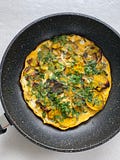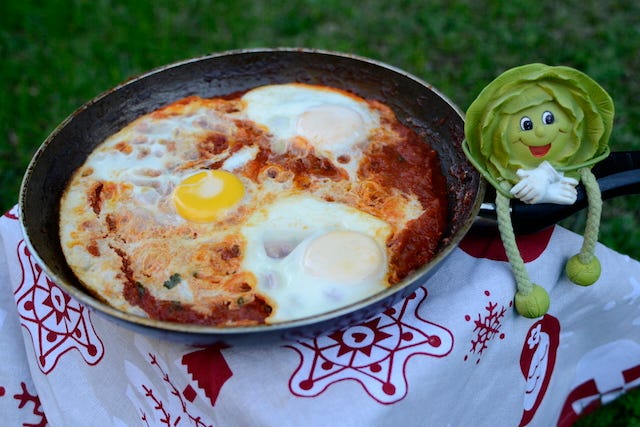Conquering my egg allergy with Wafer per Eedu
Yep, that's eggs on chips/crisps, whatever you call them!
For my recipe-lovers
Recipe: Wafer per Eedu (Eggs on chips) - paid subscribers only
Have you ever felt like an imposter?
I feel like one most weeks. Some of the common things that run through my head include:
Who do you think you are to think you can write a cookbook?
What do you really know about Indian food?
Why would your silly food story inspire someone to cook this Indian meal?
No one’s going to reply to your email/pitch anyways, why bother?
But earlier in 2022, I completed my altMBA, which changed my thinking. One of the things I learned was that we need to dance with fear. That involves, opening the door and allowing “fear” to come visit. Having a good time with fear even.
Fact is, I don’t know for sure whether I’ll get crowd-funded or get a publishing deal. I don’t know if you’ll be inspired to give some Indian dishes a try.
All I can control is showing up. And to keep on writing even when I don’t feel like it.
Which is what I’m doing today.
Since we are talking about imposter syndrome, let me tell you about when I faked my love for eggs.
I’ve always been mentally allergic to eggs. I’ll eat cakes that have eggs and dishes where I can’t see or taste the egg. But scrambled eggs, fried eggs, quiches, eggs bene, boiled eggs are all out. Simply smelling eggs being made or looking at them makes me want to throw up. At Parsi weddings, if a child is not eating what’s served in the banquet the caterer will stop and ask if they can bring the child some eggs instead. Me? I quietly gobbled down my fish so no one would ever ask me that!
But, how can a Parsi food blogger worth her salt hate eggs?
My community, the Parsis, are obsessed with eggs.
In any and every form. Eeda translates to egg and “per eeda” literally means “egg on top”. Open any Parsi cookbook, and you will find at least a handful of different akoori’s as well as dishes like mango per eeda (eggs on mango), tomato per eeda (eggs on masala tomato) and even eggs cooked on clotted cream or malai per eeda. We even have a wintry egg fudge, Eeda Pak made with 25 egg yolks!
Some stories say that our egg mania finds its roots in ancient Iran where my ancestors lived before we were persecuted and migrated to India.
In ancient Iran, eggs were seen as a symbol of fertility and new life. Ofcourse, eggs are also a cheap way to bulk up leftovers. And, a great source of protein. Which likely also has something to do with our egg fascination.
When I graduated from being a Parsi food blogger to having my own catering kitchen in India, I had to reluctantly serve up eggs on the menu.
We started with an Akoori and Salli per Eedu (spiced tomato and potato crisps on eggs). My clients were not satisfied with me serving these dishes.
Sheena wanted to hear about my favourite egg dish growing up - ummm..none?
Perin wanted to share her experience eating poro pav (omelette sandwich) at school - why why why?
I patiently heard Ravi reminisce about eating Kheema per eedu (eggs on spiced mince) at Kayani cafe - he assumed I loved eating it too.
And so it continued.
Slowly, before I knew it I was in love. I only realised this when I heard about the traditional Bharuchi Akoori (scrambled eggs made with 600gm ghee and 8 eggs!) and found myself feeling curious rather than disgusted by the eggstravaganza.
I still can’t eat scrambled eggs, but I do like a good Wafer per Eedu. It feels like a good starting point for this imposter.
What is Wafer per Eedu?
It’s literally, eggs on wafers (or potato chips, crisps, whatever you call it). I always make this dish the day after a party when I have half-eaten bags of chips lying around the house.
The whole dish comes together in five minutes. Splutter some cumin and mustard seeds in ghee, add a touch of ginger and garlic and pop in the chips. Then add the eggs and voila!
You can now feel a bit righteous finishing off the chips - you’re joining the #nofoodwaste movement!
Keep reading with a 7-day free trial
Subscribe to Beyond Butter Chicken to keep reading this post and get 7 days of free access to the full post archives.





